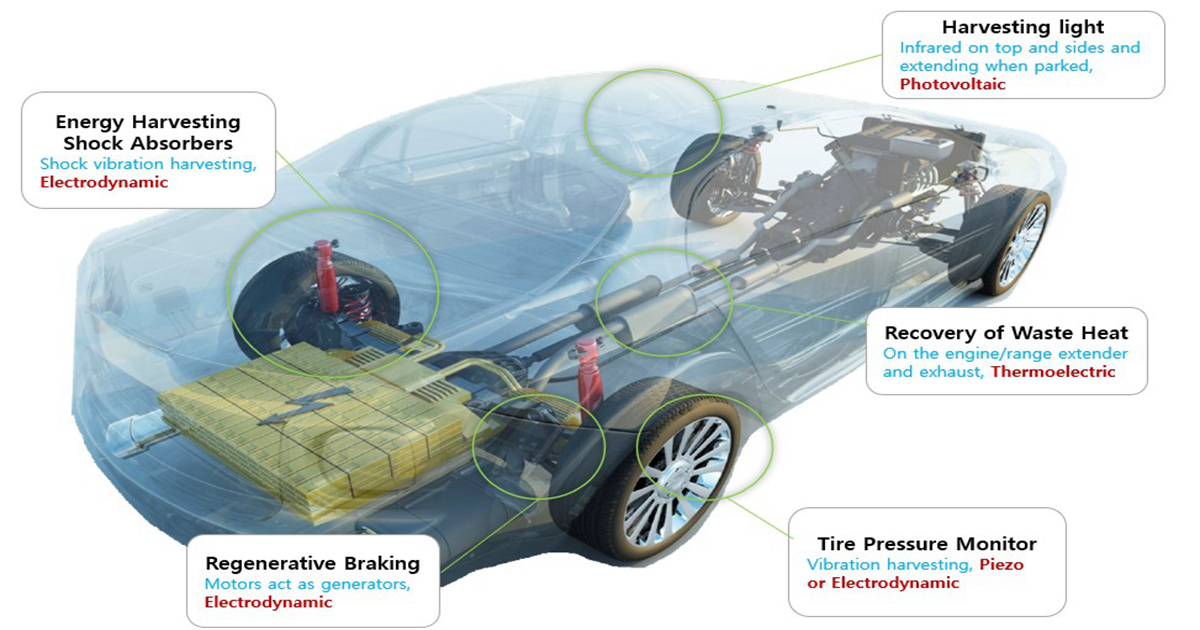Automobile Energy Harvesting Technologies II
A special issue of Applied Sciences (ISSN 2076-3417). This special issue belongs to the section "Transportation and Future Mobility".
Deadline for manuscript submissions: closed (20 September 2022) | Viewed by 3969

Special Issue Editors
Interests: energy harvesting; shock absorbers; electric propulsion system; electric vehicles; automobile generators
Special Issues, Collections and Topics in MDPI journals
Special Issue Information
Dear Colleagues,
The number of electric vehicles (EVs) is significantly increasing today; at this rate, it is expected that the number of electric cars on the road could be as high as 200 million in 2030. However, the major challenge concerns the expensive but low specific energy battery. In addition to developing cutting-edge battery technology, self-powered vehicle or automobile energy harvesting has also gained tremendous attention over the past two decades. Harvestable energy is stored in batteries for use when needed, hence extending the driving hour of EVs.
The Special Issue will collect papers from authors with professional experience in “Automobile Energy Harvesting Technologies”. Submissions to the Special Issue may address the following, or related topics:
- Regenerative braking technology;
- Vehicle thermal energy harvesting;
- Vibrational energy harvesting (from suspension systems or road);
- Piezoelectric energy harvesting.
All submissions will undergo the regular peer review and editorial procedures before publication in the journal. We look forward to your contributions or any questions that you may have.
Dr. Yon-Do Chun
Dr. Soon-Jong Jeong
Guest Editors
Manuscript Submission Information
Manuscripts should be submitted online at www.mdpi.com by registering and logging in to this website. Once you are registered, click here to go to the submission form. Manuscripts can be submitted until the deadline. All submissions that pass pre-check are peer-reviewed. Accepted papers will be published continuously in the journal (as soon as accepted) and will be listed together on the special issue website. Research articles, review articles as well as short communications are invited. For planned papers, a title and short abstract (about 100 words) can be sent to the Editorial Office for announcement on this website.
Submitted manuscripts should not have been published previously, nor be under consideration for publication elsewhere (except conference proceedings papers). All manuscripts are thoroughly refereed through a single-blind peer-review process. A guide for authors and other relevant information for submission of manuscripts is available on the Instructions for Authors page. Applied Sciences is an international peer-reviewed open access semimonthly journal published by MDPI.
Please visit the Instructions for Authors page before submitting a manuscript. The Article Processing Charge (APC) for publication in this open access journal is 2400 CHF (Swiss Francs). Submitted papers should be well formatted and use good English. Authors may use MDPI's English editing service prior to publication or during author revisions.
Keywords
- energy harvesting
- regenerative braking
- thermal energy harvesting
- electromagnetic shock absorber
- piezoelectric energy harvesting
Benefits of Publishing in a Special Issue
- Ease of navigation: Grouping papers by topic helps scholars navigate broad scope journals more efficiently.
- Greater discoverability: Special Issues support the reach and impact of scientific research. Articles in Special Issues are more discoverable and cited more frequently.
- Expansion of research network: Special Issues facilitate connections among authors, fostering scientific collaborations.
- External promotion: Articles in Special Issues are often promoted through the journal's social media, increasing their visibility.
- Reprint: MDPI Books provides the opportunity to republish successful Special Issues in book format, both online and in print.
Further information on MDPI's Special Issue policies can be found here.
Related Special Issue
- Automobile Energy Harvesting Technologies in Applied Sciences (4 articles)






